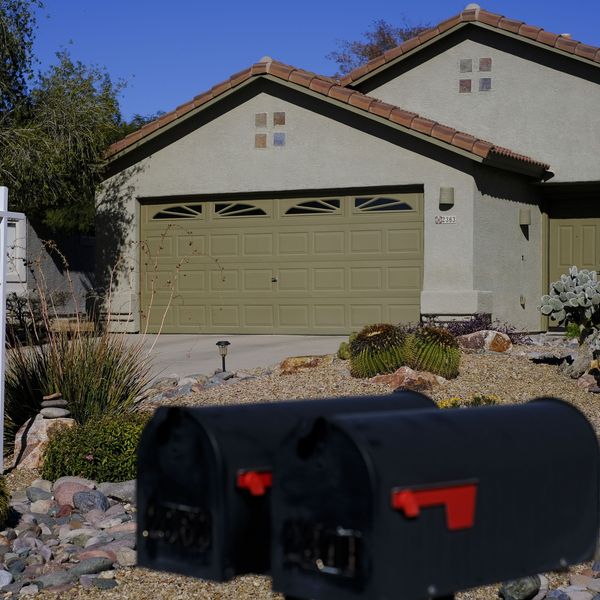Foreclosure Crisis Fueled Dramatic Rise of Racial Segregation: Study
Displacement of black and Latino households was so dramatic, crisis should be seen as a 'mass migration event' says lead author of paper
The foreclosure crisis that drove approximately 9 million people across the United States from their homes disproportionately displaced black and Latino households and led to a spike in segregation along racial lines, a new study finds.
In fact, displacement was so dramatic that Matthew Hall, assistant professor at Cornell University and lead author of the study, told Common Dreams that the crisis should be seen as a "mass migration event."
"We found that the racial patterns of the foreclosure crisis are shocking and perhaps even more stark than we knew before," said Hall, who is a demographer.
The Cornell University analysis Neighborhood Foreclosures, Racial/Ethnic Transitions, and Residential Segregation was published online in late April and is set to be included in the June issue of American Sociological Review.
Examining foreclosure rates in urban areas between 2005 and 2009, researchers found that black neighborhoods faced 8.1 foreclosures per 100 homes, and Latino neighborhoods faced a rate of 6.2 per 100 homes.
This compared with the average of 2.3 foreclosures per 100 homes in white neighborhoods, meaning that majority black and Latino neighborhoods faced home-loss rates at approximately three times that of white areas.
A report summary explains that "white households were significantly more likely to leave areas with high foreclosure rates, while black and Latino families entered these neighborhoods out of necessity or to seek newly affordable housing options."
This led to the re-segregation of urban areas.
Researchers concluded that overall segregation jumped dramatically during this period, growing by 50 percent between Latinos and whites and 20 percent between blacks and whites, as people of color moved into neighborhoods vacated by white people.
"This really was a crisis that hit African-Americans and Latinos especially hard," said Hall.
"But the foreclosure crisis has not ended," Hall added. "There are still a large number of foreclosures that are unresolved and homes that are somewhere in the foreclosure process, which can take years. The impacts of the crisis on segregation have therefore not been completely borne out."
An Urgent Message From Our Co-Founder
Dear Common Dreams reader, The U.S. is on a fast track to authoritarianism like nothing I've ever seen. Meanwhile, corporate news outlets are utterly capitulating to Trump, twisting their coverage to avoid drawing his ire while lining up to stuff cash in his pockets. That's why I believe that Common Dreams is doing the best and most consequential reporting that we've ever done. Our small but mighty team is a progressive reporting powerhouse, covering the news every day that the corporate media never will. Our mission has always been simple: To inform. To inspire. And to ignite change for the common good. Now here's the key piece that I want all our readers to understand: None of this would be possible without your financial support. That's not just some fundraising cliche. It's the absolute and literal truth. We don't accept corporate advertising and never will. We don't have a paywall because we don't think people should be blocked from critical news based on their ability to pay. Everything we do is funded by the donations of readers like you. Will you donate now to help power the nonprofit, independent reporting of Common Dreams? Thank you for being a vital member of our community. Together, we can keep independent journalism alive when it’s needed most. - Craig Brown, Co-founder |
The foreclosure crisis that drove approximately 9 million people across the United States from their homes disproportionately displaced black and Latino households and led to a spike in segregation along racial lines, a new study finds.
In fact, displacement was so dramatic that Matthew Hall, assistant professor at Cornell University and lead author of the study, told Common Dreams that the crisis should be seen as a "mass migration event."
"We found that the racial patterns of the foreclosure crisis are shocking and perhaps even more stark than we knew before," said Hall, who is a demographer.
The Cornell University analysis Neighborhood Foreclosures, Racial/Ethnic Transitions, and Residential Segregation was published online in late April and is set to be included in the June issue of American Sociological Review.
Examining foreclosure rates in urban areas between 2005 and 2009, researchers found that black neighborhoods faced 8.1 foreclosures per 100 homes, and Latino neighborhoods faced a rate of 6.2 per 100 homes.
This compared with the average of 2.3 foreclosures per 100 homes in white neighborhoods, meaning that majority black and Latino neighborhoods faced home-loss rates at approximately three times that of white areas.
A report summary explains that "white households were significantly more likely to leave areas with high foreclosure rates, while black and Latino families entered these neighborhoods out of necessity or to seek newly affordable housing options."
This led to the re-segregation of urban areas.
Researchers concluded that overall segregation jumped dramatically during this period, growing by 50 percent between Latinos and whites and 20 percent between blacks and whites, as people of color moved into neighborhoods vacated by white people.
"This really was a crisis that hit African-Americans and Latinos especially hard," said Hall.
"But the foreclosure crisis has not ended," Hall added. "There are still a large number of foreclosures that are unresolved and homes that are somewhere in the foreclosure process, which can take years. The impacts of the crisis on segregation have therefore not been completely borne out."
The foreclosure crisis that drove approximately 9 million people across the United States from their homes disproportionately displaced black and Latino households and led to a spike in segregation along racial lines, a new study finds.
In fact, displacement was so dramatic that Matthew Hall, assistant professor at Cornell University and lead author of the study, told Common Dreams that the crisis should be seen as a "mass migration event."
"We found that the racial patterns of the foreclosure crisis are shocking and perhaps even more stark than we knew before," said Hall, who is a demographer.
The Cornell University analysis Neighborhood Foreclosures, Racial/Ethnic Transitions, and Residential Segregation was published online in late April and is set to be included in the June issue of American Sociological Review.
Examining foreclosure rates in urban areas between 2005 and 2009, researchers found that black neighborhoods faced 8.1 foreclosures per 100 homes, and Latino neighborhoods faced a rate of 6.2 per 100 homes.
This compared with the average of 2.3 foreclosures per 100 homes in white neighborhoods, meaning that majority black and Latino neighborhoods faced home-loss rates at approximately three times that of white areas.
A report summary explains that "white households were significantly more likely to leave areas with high foreclosure rates, while black and Latino families entered these neighborhoods out of necessity or to seek newly affordable housing options."
This led to the re-segregation of urban areas.
Researchers concluded that overall segregation jumped dramatically during this period, growing by 50 percent between Latinos and whites and 20 percent between blacks and whites, as people of color moved into neighborhoods vacated by white people.
"This really was a crisis that hit African-Americans and Latinos especially hard," said Hall.
"But the foreclosure crisis has not ended," Hall added. "There are still a large number of foreclosures that are unresolved and homes that are somewhere in the foreclosure process, which can take years. The impacts of the crisis on segregation have therefore not been completely borne out."

